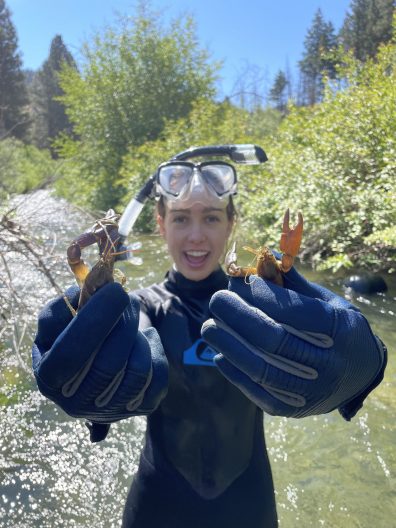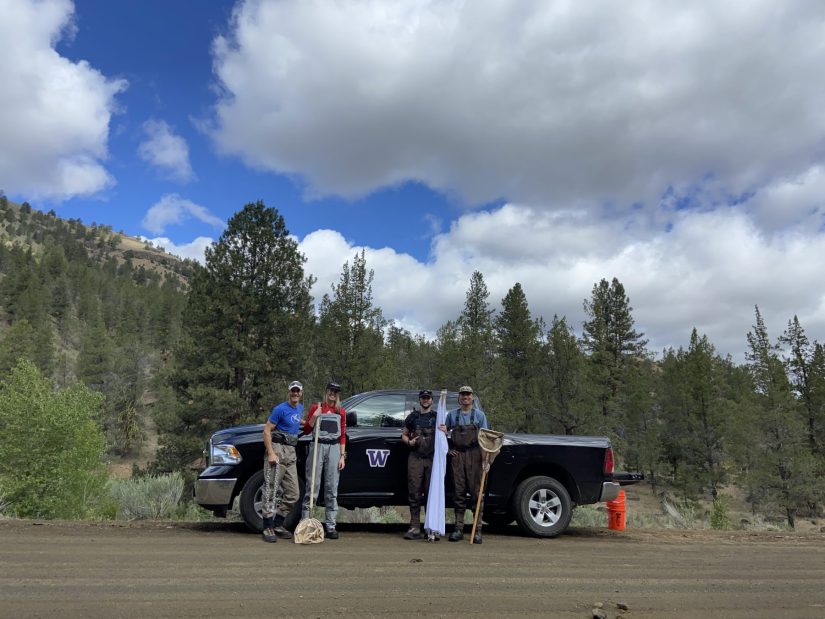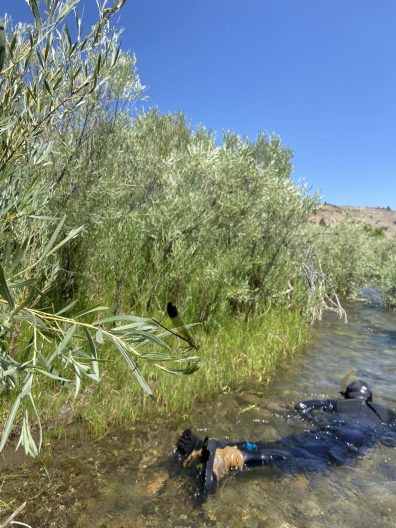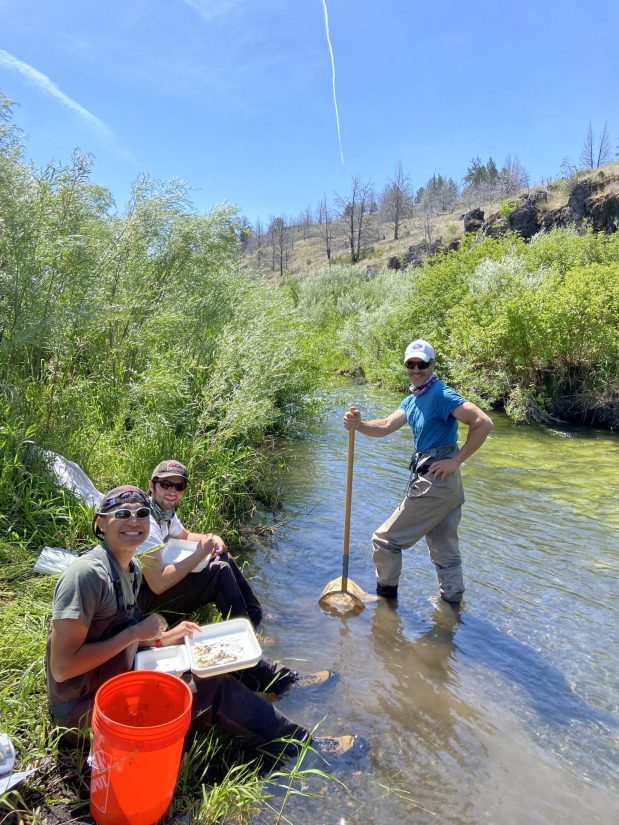Summer field season with the Freshwater Ecology and Conservation Lab
Claire Vaage, a masters student in the Freshwater Ecology and Conservation Lab advised by Julian Olden, spoke with us about her summer field season in Central Oregon.

Spending 5 weeks during this summer in Oregon, I led a research team of two to four people at a time. Each day we conducted snorkel surveys and collected samples of freshwater macroinvertebrates and vegetation.
Taking place on the South Fork of the John Day River, I led a team of two technicians in a collaborative project with support from the Oregon Department of Fish and Wildlife (ODFW) and the Confederated Tribes of the Warm Springs Reservation.
One of our key focuses was steelhead, with the goal of understanding potential threats to this ESA-listed population of less than one thousand individuals. Using snorkel surveys, we also monitored Chinook fry and parr that migrate to rear in South Fork. Across various field sites, we collected density estimates, and confirmed presence-absence of both steelhead fry and rusty crayfish. Due to high water flow, both our team and ODFW were unfortunately unable to conduct redd surveys which would have allowed us to investigate competition for space. Field work is never perfect!

Another facet of the field season was macroinvertebrate sampling and habitat surveys. This involved kick-seining for rusty crayfish, a rapidly spreading invasive species in the river basin, and signal crayfish which are native to the waters. We observed densities of >40 rusty crayfish in a square meter area—a jarring and concerning number. An important part of freshwater work is community composition estimates of bugs which will be leveraged to understand how the invasion may impact steelhead through competition for food.

A third area of the work was collecting samples of bugs, algae, crayfish and steelhead to be used for stable isotope analysis. This allows us to reconstruct the food web and estimate diet sources using mixing models. Furthermore, we’ll look at how invasion may impact steelhead through predation on steelhead eggs, alevins, and fry. We can do this through the identification of a marine-derived signature through bulk stable isotope and fatty acid analyses, using muscle tissue and hepatopancreas taken from the crayfish.
Invasive crayfish have become a target of concern due to their high densities and notable polytrophic feeding habits. Research investigating the potentially detrimental impacts to salmonids, here in the West in particular, has been slow to accumulate. To best guide federal, state, and tribal management of the threatened population of steelhead, we first need to understand what harm the rusty crayfish may be causing and how the threats may vary across the invasion gradient.
